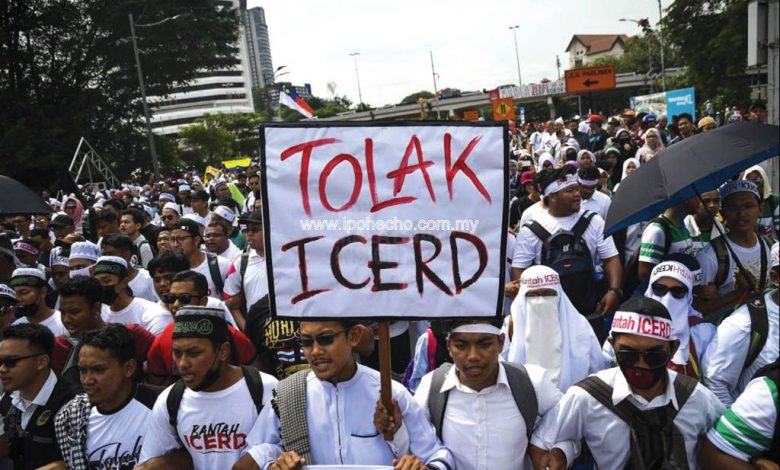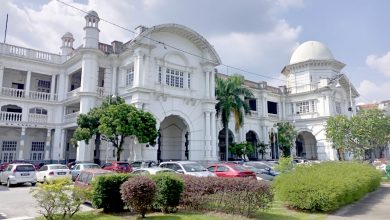

The year is fast coming to a close. It is time once again to make conclusions about how the Year 2018 has impacted Malaysians, in general. The icing on the cake is, of course, the outcome of the 14th General Elections on Sunday, May 9 which saw the ouster of BarisanNasional (BN), the ruling coalition that had been calling the shots for 61 years.
Fortunately, I am one of those who has been around since the party, then known as Alliance (PartiPerikatan) with its catchy symbol of a white sailing boat on a blue backdrop, won the trial local council elections in 1955 followed by the inaugural general elections after the country’s independence in 1957.
Up until then, Malaysia was being constantly mocked by its rather condescending moniker, the country with the longest one-party rule in the world. Before BN the title was held by the Indian Congress Party which was in power in the Indian subcontinent for 49 years, from 1947 till its defeat by Indian right-wing party the BharatiyaJanata Party (BJP) in 1996. The defeat saw the end of Nehru’s legacy in India.
Incidentally, BJP’s rule ended abruptly 13 days later because it lacked a majority in the lower house of Parliament. A similar scenario is evident in the current ruling coalition, PakatanHarapan (PH). The party lacks a two-thirds majority in parliament and thus is unable to enact or amend bills that run contrary to the federal constitution. Amending the contentious Sedition Act is a case in point and, perhaps, to further clip the wings of the royalty in view of the ongoing debate on the status of PulauKukup, a largely mangrove-infested islet off the coast of Johor.
The end of BN rule ushered a new dawn to the political landscape of Malaysia. Nonagenarian and former Prime Minister of Malaysia Tun Dr Mahathir was elected to fill the post of the seventh premier. At 93 years of age, he is being acknowledged as the senior-most serving head of government in the world. An unenviable feat considering he was responsible for the introduction of “crony capitalism” making a small band of well-connected and “apple-polishing” businessmen super-duper rich.
That was before “Najibnomics” (NajibRazak’s brand of economic ideas and concepts) resulted in the transformation of a widely-condemned kleptocratic regime which brought down BarisanNasional and a premature end to the wheeling and dealing of a corrupt couple who amassed billions via the manipulation of the country’s coffers. Today Najib, his wife and his henchmen are facing a plethora of criminal charges, ranging from money laundering to outright stealing. Their fate will be decided by the courts in 2019, hopefully.
Events unfolding the last few months, beginning with the widely circulated video clip of a Malay guy haranguing a young Chinese lady over her beer-promoting effort within a non-halal section of a supermarket to the racially-charged Seafield Hindu Temple debacle and the recent Anti ICERD rally in Kuala Lumpur, the spectre of May 13 race riots of 1969 was becoming real.
I was riled when some smart alecks went public with threats of rioting as a means to settle old scores. The duo warned of a return to that perilous period if the PH government continues with its reform agenda, especially one that impinges on Malays’ rights. AzwanddinHamzah of PertubuhanJaringanMelayu Malaysia and blogger Ragvinder Singh Jess made incendiary remarks to that effect. Being someone who had witnessed May 13 firsthand, I am definitely appalled by such careless remarks.
In the early 1970s, Kuala Lumpur witnessed numerous clashes between Police and students over economic issues plaguing the nation then. My battalion was stationed at Wardieburn Camp in Setapak. We were tasked to assist the Police in Kuala Lumpur and Rawang. My company was assigned to police districts of Sentul and Campbell. Being the liaison officer I got to follow the police riot squads on their rounds. One nasty incident took place near Odeon Cinema along JalanTuanku Abdul Rahman. And this is very fearsome – once trouble starts it is difficult to diffuse, as it becomes very contagious and will spread like wildfire.
In a civil strife, the army’s role is to assist the Police. Getting the army deployed on the ground is the last thing on any government’s mind. The downside is not only hideous but bad for publicity. It signifies a complete collapse of law and order. No government, worth its salt, would want the army to take over the Police’s roles. It is detrimental to a nation’s health.
The past few weeks had been very touchy especially with the Anti-ICERD rally on Saturday, December 8 at Dataran Merdeka in Kuala Lumpur. According to conservative estimates some 50 to 60 thousand people, from all over the country, attended. I concur with Mariam Mokhtar’s views that the real winners in the anti-ICERD rally “were the bullies and the racists who threatened violence simply to get their way”.
The episode brings to mind what took place in Indonesia during the closing stages of President Sukarno’s communist-infiltrated regime. It is best illustrated in Christopher Koch’s 1978 novel “The Year of Living Dangerously” which was made into a movie soon after. Set primarily in the Indonesian capital city of Jakarta, it also describes a partly fictionalised version of the events leading up to the coup attempt by the Communist Party of Indonesia on September 30, 1965.
I can’t help feeling so, as events unfolding in the nation’s capital are akin to a tinderbox that could ignite with the slightest provocation. A potentially volatile situation will go haywire if it is not carefully managed. Fortunately, cool heads prevailed.
But what I find disturbing today is the elegant silence by many fiery Malay-rights groups, individuals and political parties who have threatened to run amok if pushed to a corner when it was revealed that RM4.1 billion had gone missing from Tabung Haji, the Malaysian Hajj pilgrim fund that facilitates savings for a pilgrimage to Mecca.
Fathol Zaman Bukhari


